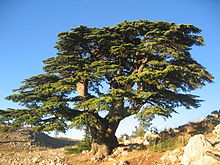
Enlil, later known as Elil and Ellil, is an ancient Mesopotamian god associated with wind, air, earth, and storms. He is first attested as the chief deity of the Sumerian pantheon, but he was later worshipped by the Akkadians, Babylonians, Assyrians, and Hurrians. Enlil's primary center of worship was the Ekur temple in the city of Nippur, which was believed to have been built by Enlil himself and was regarded as the "mooring-rope" of heaven and earth. He is also sometimes referred to in Sumerian texts as Nunamnir. According to one Sumerian hymn, Enlil himself was so holy that not even the other gods could look upon him. Enlil rose to prominence during the twenty-fourth century BC with the rise of Nippur. His cult fell into decline after Nippur was sacked by the Elamites in 1230 BC and he was eventually supplanted as the chief god of the Mesopotamian pantheon by the Babylonian national god Marduk.
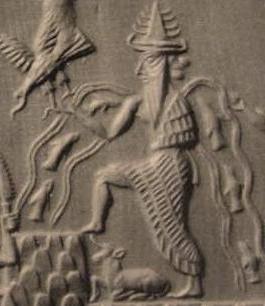
Enki is the Sumerian god of water, knowledge (gestú), crafts (gašam), and creation (nudimmud), and one of the Anunnaki. He was later known as Ea or Ae in Akkadian (Assyrian-Babylonian) religion, and is identified by some scholars with Ia in Canaanite religion. The name was rendered Aos in Greek sources.

Ninḫursaĝ, sometimes transcribed Ninursag, Ninḫarsag, or Ninḫursaĝa, also known as Damgalnuna or Ninmah, was the ancient Sumerian mother goddess of the mountains, and one of the seven great deities of Sumer. She is known earliest as a nurturing or fertility goddess. Temple hymn sources identify her as the "true and great lady of heaven" and kings of Lagash were "nourished by Ninhursag's milk". She is the tutelary deity to several Sumerian leaders.

Dilmun, or Telmun, was an ancient East Semitic-speaking civilization in Eastern Arabia mentioned from the 3rd millennium BC onwards. Based on contextual evidence, it was located in the Persian Gulf, on a trade route between Mesopotamia and the Indus Valley civilisation, close to the sea and to artesian springs. Dilmun encompassed Bahrain, Kuwait, and eastern Saudi Arabia.
Ninlil was a Mesopotamian goddess regarded as the wife of Enlil. She shared many of his functions, especially the responsibility for declaring destinies, and like him was regarded as a senior deity and head of the pantheon. She is also well attested as the mother of his children, such as the underworld god Nergal, the moon god Nanna or the warrior god Ninurta. She was chiefly worshiped in Nippur and nearby Tummal alongside Enlil, and multiple temples and shrines dedicated to her are attested in textual sources from these cities. In the first millennium BCE she was also introduced to Ḫursaĝkalamma near Kish, where she was worshiped alongside the goddess Bizilla, who was likely her sukkal.
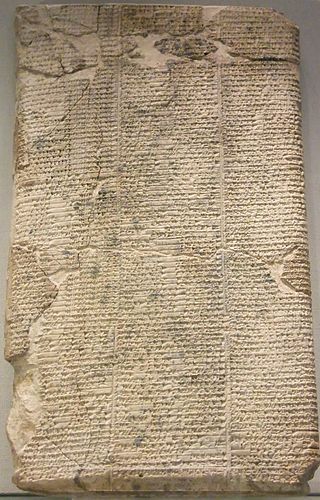
The Lament for Ur, or Lamentation over the city of Ur is a Sumerian lament composed around the time of the fall of Ur to the Elamites and the end of the city's third dynasty.

Hubur is a Sumerian term meaning "river", "watercourse" or "netherworld." It is usually the "river of the netherworld".
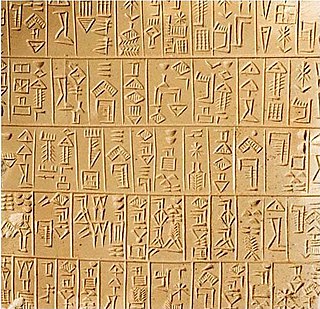
Sumerian literature constitutes the earliest known corpus of recorded literature, including the religious writings and other traditional stories maintained by the Sumerian civilization and largely preserved by the later Akkadian and Babylonian empires. These records were written in the Sumerian language in the 3rd and 2nd millennia BC during the Middle Bronze Age.
Eridu Genesis, also called the Sumerian Creation Myth, Sumerian Flood Story and the Sumerian Deluge Myth, offers a description of the story surrounding how humanity was created by the gods, how the office of kingship entered human civilization, the circumstances leading to the origins of the first cities, and the global flood.
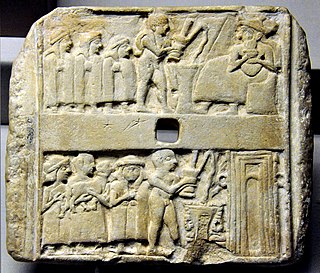
Sumerian religion was the religion practiced by the people of Sumer, the first literate civilization found in recorded history and based in ancient Mesopotamia, and what is modern day Iraq. The Sumerians widely regarded their divinities as responsible for all matters pertaining to the natural and social orders of their society.

The Barton Cylinder, also known as CBS 8383, is a Sumerian creation myth, written on a clay cylinder in the mid to late 3rd millennium BCE, which is now in the University of Pennsylvania Museum of Archaeology and Anthropology. Joan Goodnick Westenholz suggests it dates to around 2400 BC.

The "Debate between sheep and grain" or "Myth of cattle and grain" is a Sumerian disputation and creation myth, written on clay tablets in the mid to late 3rd millennium BC.

Enlil and Ninlil, the Myth of Enlil and Ninlil, or Enlil and Ninlil: The begetting of Nanna is a Sumerian creation myth, written on clay tablets in the mid to late 3rd millennium BC.

Self-praise of Shulgi is a Sumerian hymn dedicated to the Third Dynasty of Ur ruler Shulgi, written on clay tablets dated to between 2100 and 2000 BC.

The Kesh temple hymn, Liturgy to Nintud, or Liturgy to Nintud on the creation of man and woman, is a Sumerian tablet, written on clay tablets as early as 2600 BCE. Along with the Instructions of Shuruppak, it is the oldest surviving literature in the world.

Ekur, also known as Duranki, is a Sumerian term meaning "mountain house". It is the assembly of the gods in the Garden of the gods, parallel in Greek mythology to Mount Olympus and was the most revered and sacred building of ancient Sumer.
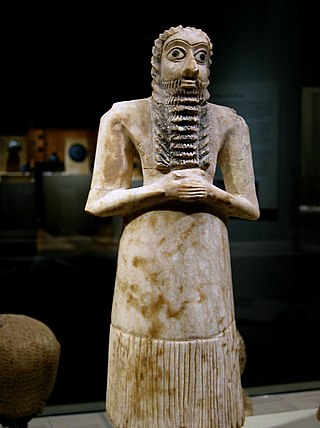
The Hymn to Enlil, Enlil and the Ekur (Enlil A), Hymn to the Ekur, Hymn and incantation to Enlil, Hymn to Enlil the all beneficent or Excerpt from an exorcism is a Sumerian myth, written on clay tablets in the late third millennium BC.

The Song of the hoe, sometimes also known as the Creation of the pickaxe or the Praise of the pickaxe, is a Sumerian creation myth, written on clay tablets from the last century of the 3rd millennium BCE.
Tummal (Tum-ma-alki) was an ancient Near East cult site of the goddess Ninlil, as Egi-Tummal, currently unlocated but known to be in the vicinity of Nippur and Drehem. E-Tummal was the temple to Ninlil located there.
Aruru was a Mesopotamian goddess. The origin of her name is presently uncertain. While initially considered an independent deity associated with vegetation and portrayed in hymns as violent, she eventually came to be viewed as analogous Ninhursag. Her name could also function as an epithet of goddesses such as Nisaba and Ezina-Kusu. She was often called the older sister of Enlil. Her cult centers most likely were the cities of Kesh, Adab and Irisaĝrig. She appears in a number of literary texts, some of which preserve information about her original character. She is also present in the Epic of Gilgamesh, which portrays her as the creator of Enkidu.



